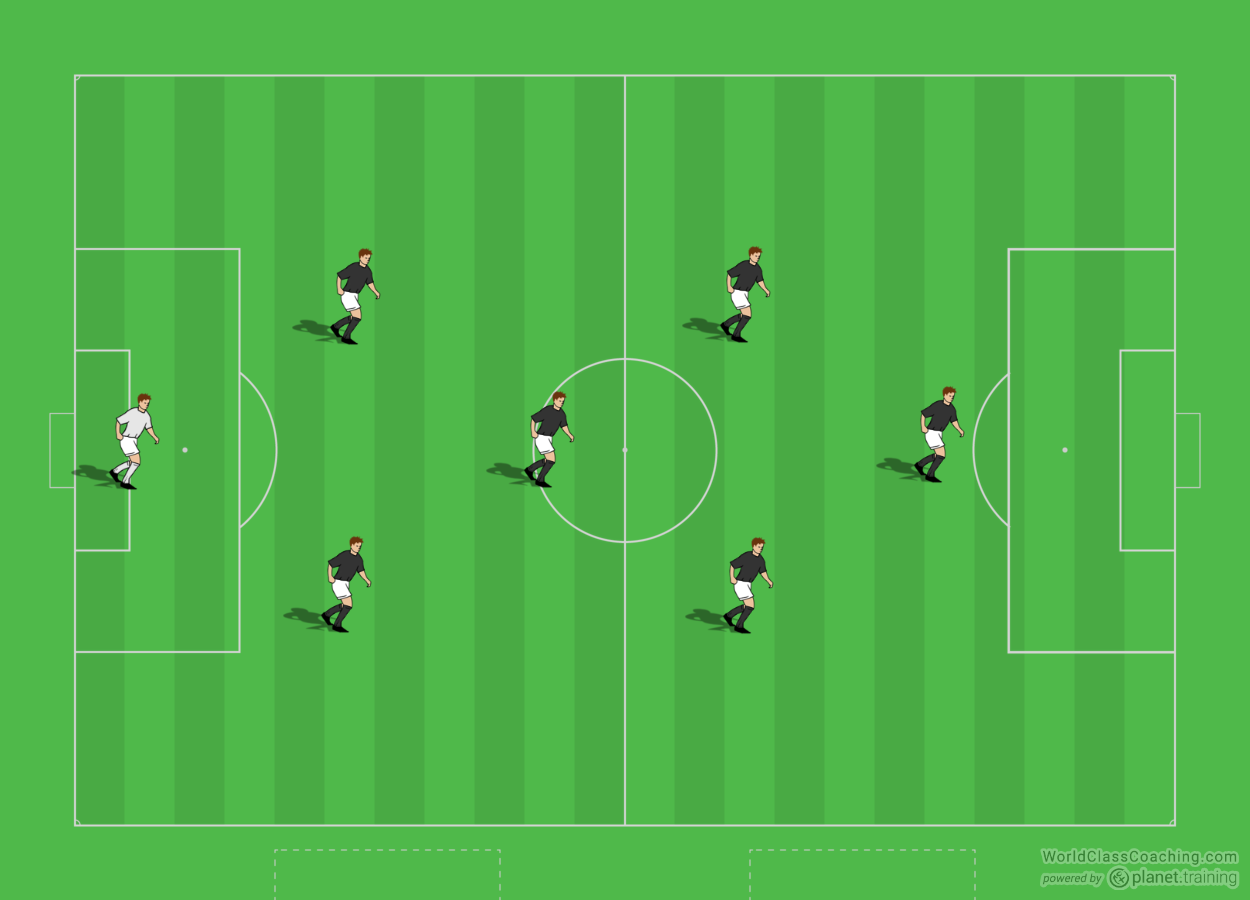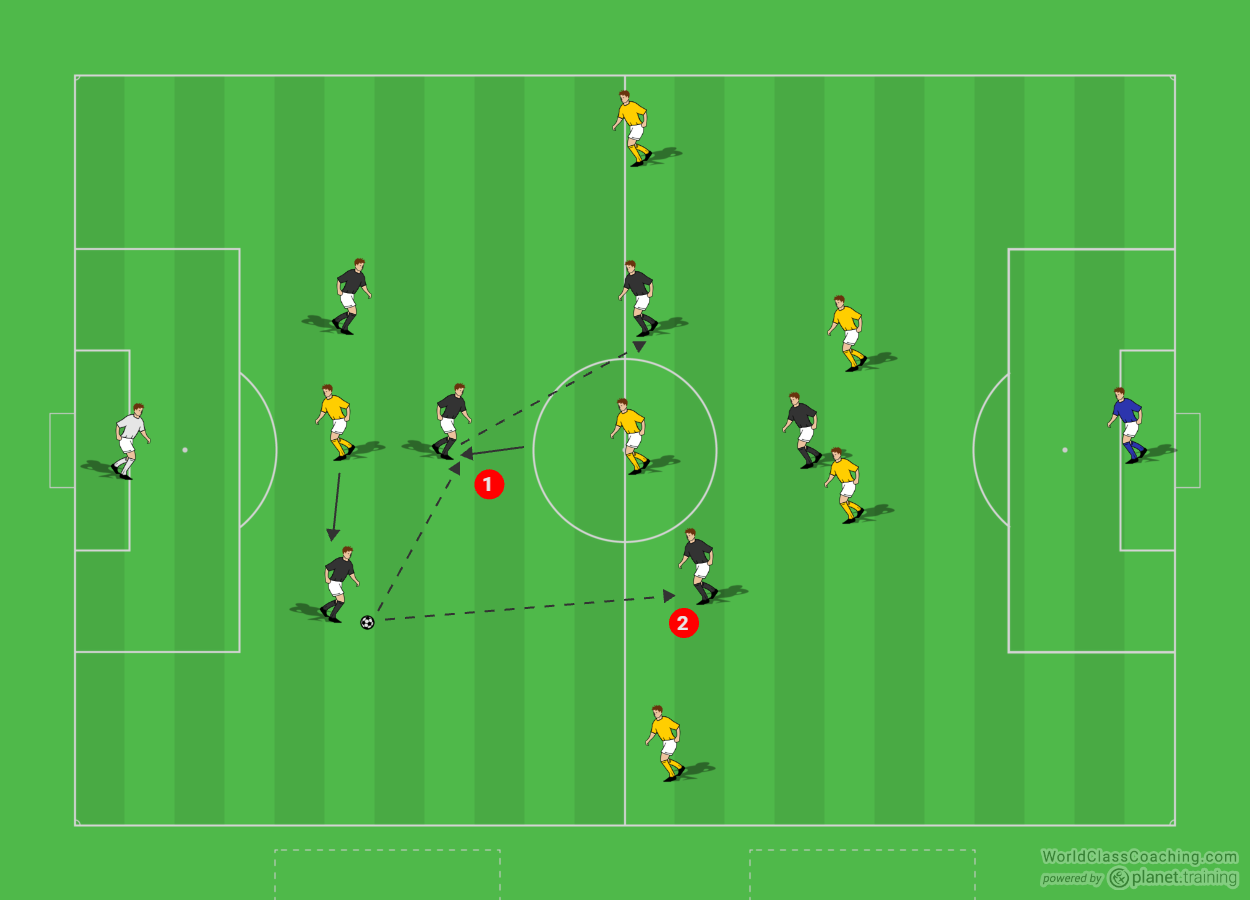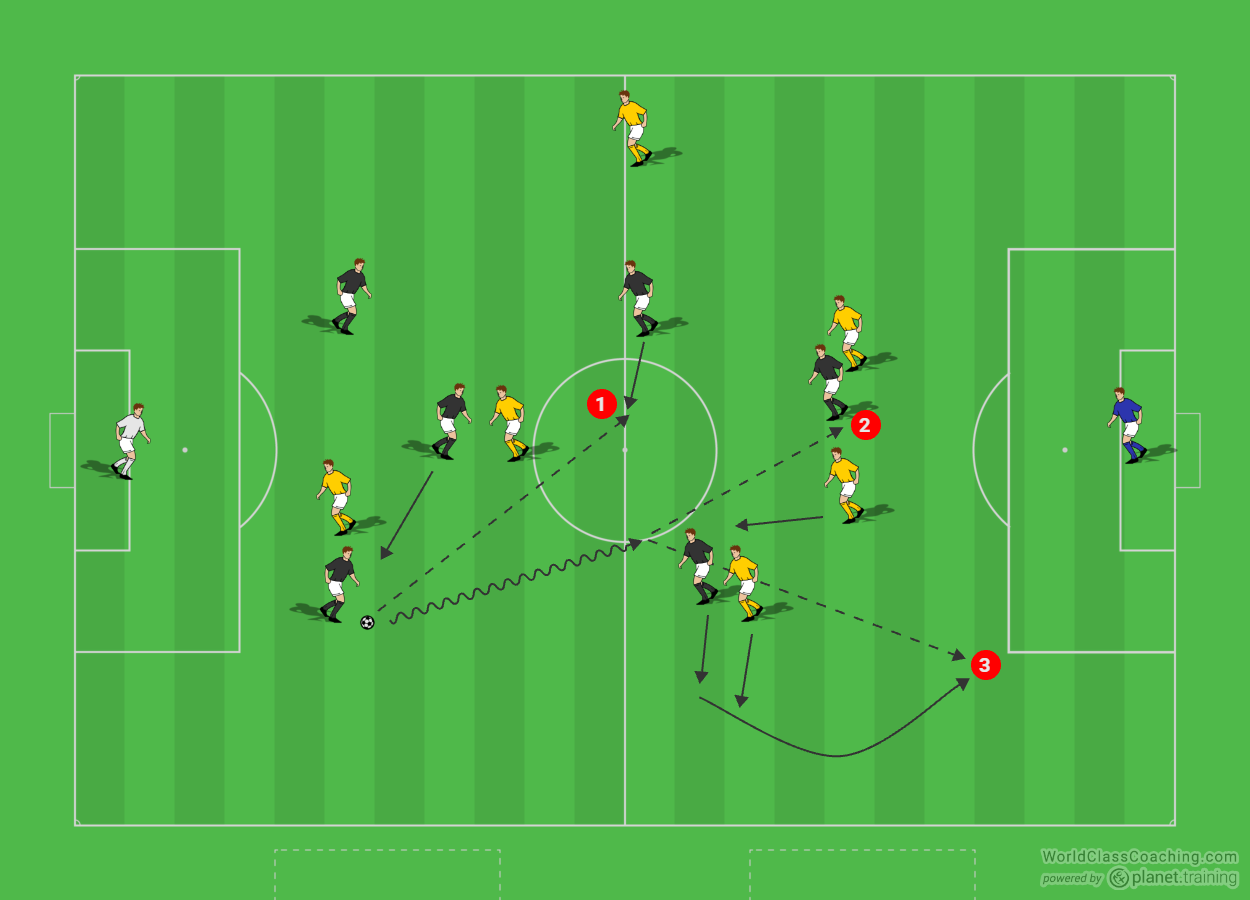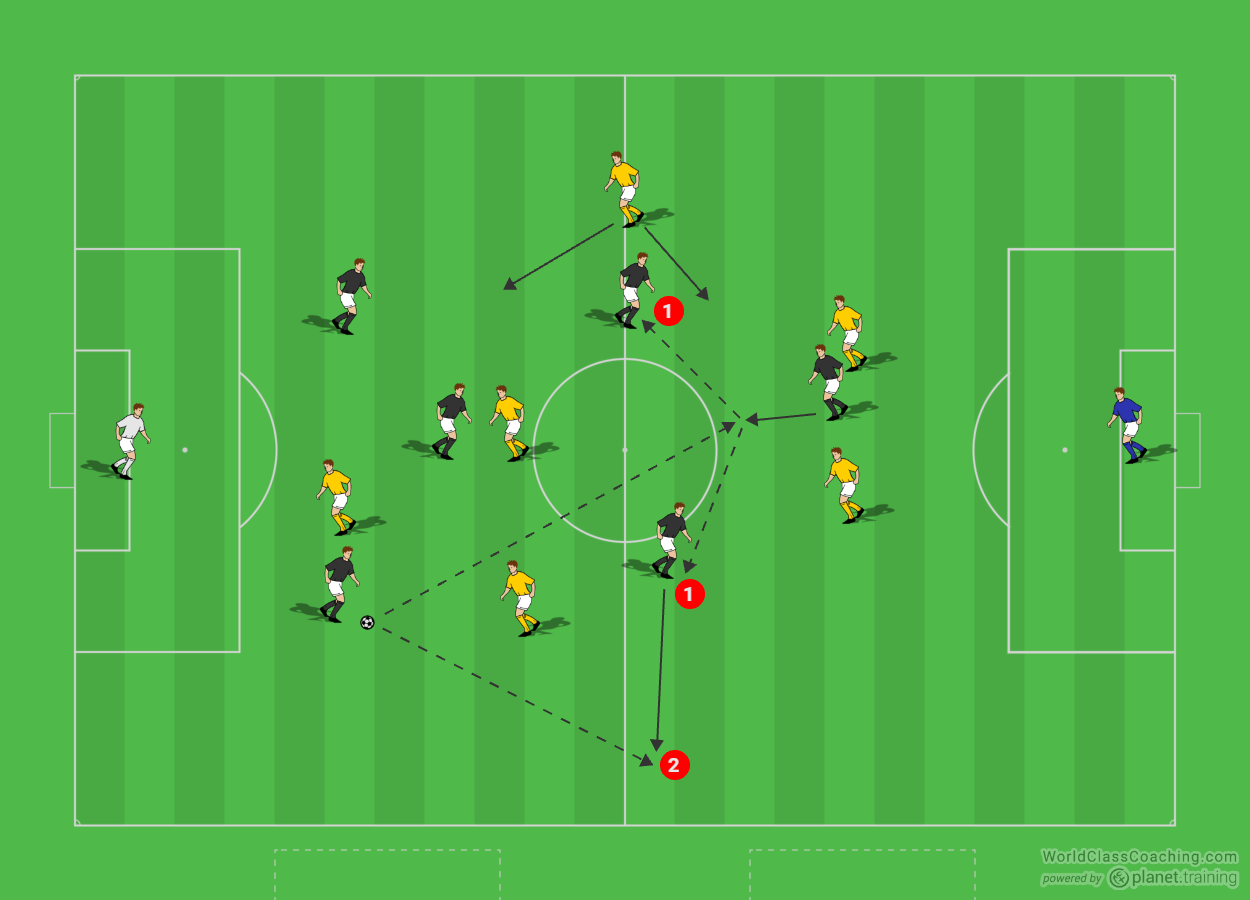By Sean Pearson
With the new USSF mandated birth year and small sided games changes there is a lot of trial and error regarding formations and systems of play. Instead of 8v8 formations, as coaches, we are now trying to figure out how to position our players in the new 7v7 and 9v9 formations. Some clubs have an academy structure where all teams must play the same formation, others allow coaches to choose what works for their team because players in each team have different attributes.
In these Systems of Play articles, I aim to address a wide range of 7v7, 9v9 and 11v11 formations and ways in which to use your players to your advantage.
Formation
The 2-1-2-1 is the 7v7 form of the 4-3-3. The central players are positioned in the same way as the 11v11 formation. This allows the younger players to be closer together and overload the middle of the field. Yes, you may give up some width but the attacking midfielders can offer width if you wish.

How to Dominate the Middle
Because the formation is narrow it will overload most in the middle. In this case 3v1 in the center of the field. Depending on the movement of the opposition central midfielder the center back, when playing out can play to 1) the defensive midfielder of 2) an attacking midfielder.

If the opposition man-mark the central midfielders, then it is important that you manipulate their movement. The defensive midfielder can move down and the attacking midfielder can move to a wider position. This opens up the middle of the field.
With an attacking midfielder still in the middle 1) the center back can pass to them 2) the center back can move forwards with the ball, the defensive midfielder takes the place of the center back to protect the defensive shape. Then depending on the movement of the defenders can play the striker as the center back steps forward or the attacking midfielder as they curl into the space. This can be effective as the defending play can now only watch either the ball or the player not both.

If the opposition decides to press or even come narrow to negate the dominance, the striker can drop down in to the gap between the two attacking midfielders.
- As the striker drops down there is a chance a center back will come with them. They should be prepared for this by setting (passing back one time) to the attacking midfielders. If a wide player comes across to stop that pass the striker should look to play the opposite attacking midfielder.
- If a pass to the striker is not on and it is now too compact in the middle, use an attacking midfielder to move out wide.

Use the players in the middle of the field to create options depending on the position and movement of the opposition. Teach your players to recognize how the other team is positioned and what pass is best depending on each scenario
By Sean Pearson. Sean is also the author Coaching Team Shape in the 3-3-1, Coaching Team Shape in the 4-2-3-1 and Coaching Team Shape in the 4-3-3


